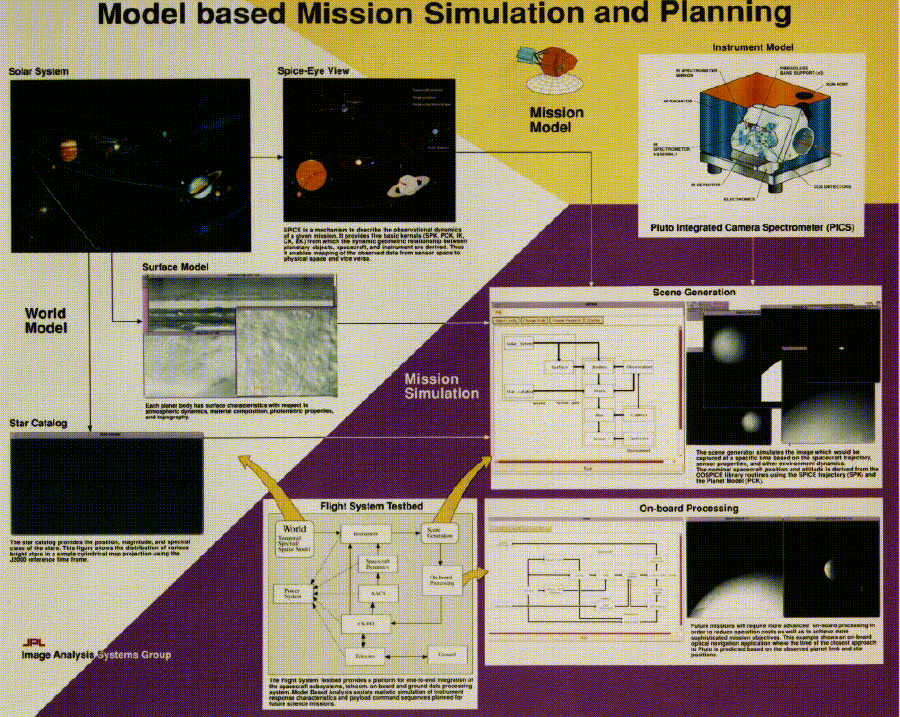
Parallel architecture implementation of the above scene generation applications were approached by designing a set of system software which provides large volume data set handling, architecture independent data distribution, and architecture optimal data transport mechanism.
Accomplishments: A set of general purpose utilities and three scene generation programs were developed employing the general purpose utilities. The three scene generation programs are very large volume terrain renderer, In-situ mission panoramic stereo imager simulator, and Fly-by mission Scene generator (world renderer). The utilities are Multi-resolution Tile based memory management, distributed object class library, and SHMEM based NX emulator. Detailed descriptions of these tools and applications are available via http://www-ias.jpl.nasa.gov/IAS/hpcc.html.
Significance: The above scene generation capabilities support specific missions' objectives as an integral part of the end-to-end mission design tools. The World renderer is interfaced to JPL FST as a generalized scene generator supporting simulation of various missions including Pluto mission, Stardust, and Mars 98. The Panoramic stereo renderer is interfaced to SIMP (Simulator for Imager for the Mars Pathfinder) for payload simulation and instrument command sequence generation. It provides a stereo pair frames (512 by 512) less than 1 second (using 64 nodes, 17 seconds on SGI Indigo 2). The title management layer of the terrain renderer has been modified to use SHMEM and the inter-node communication time has been significantly reduced.
Status/Plans: The general purpose utilities have been successfully demonstrated on Cray T3D using SHMEM operating system via the scene generation application programs. Currently, the applications utilize socket based interface over a ethernet network. We plan to integrate the above applications to PDC over HIPPI network directly from the JPL super computing center.
Point of Contact:
Meemong Lee
Jet Propulsion Laboratory
(818)354-2228